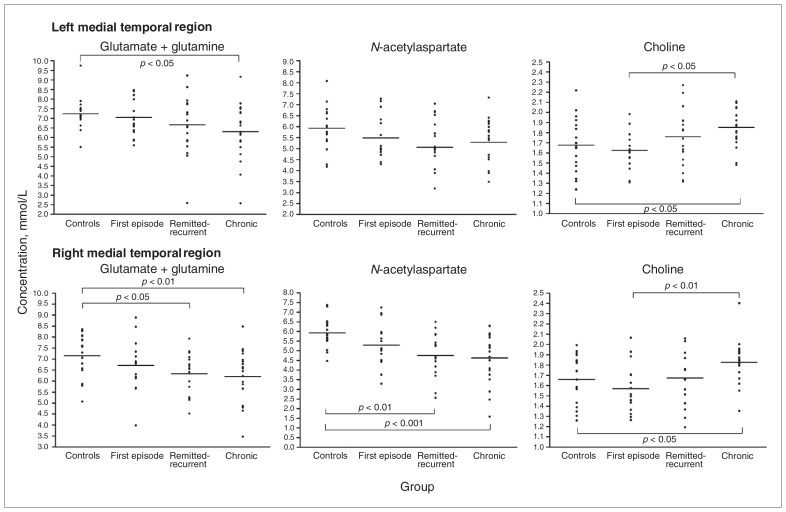Fig. 2.
Absolute metabolite concentrations (glutamate/glutamine [Glx], N-acetylaspartate [NAA] and choline [Cho]) in left and right medial temporal regions of healthy controls and patients with first-episode, remitted-recurrent or treatment-resistant/chronic depression. Group means are displayed as horizontal lines. The p values are derived from Bonferroni post hoc tests. (Top) The Glx levels in patients with treatment-resistant/chronic depression were 14% lower than those in controls (p = 0.024, Cohen d = 0.81). The Cho concentrations in patients with treatment-resistant/chronic depression were 19% higher than those in patients with a first episode (p = 0.006, Cohen d = 1.89) and 12% higher than those in controls (p = 0.025, Cohen d = 0.80). Differences of NAA did not reach statistical significance. (Bottom) The Glx levels in patients with treatment-resistant/chronic depression were 15% lower than those in controls (p = 0.008, Cohen d = 1.04), and their NAA levels were 21% lower than those in controls (p < 0.001, Cohen d = 1.11). The Glx levels in patients with remitted-recurrent depression were 14% lower than those in controls (p = 0.025, Cohen d = 1.05), and their NAA levels were 17% lower than those in controls (p = 0.002, Cohen d = 1.04). The Cho concentrations in patients with treatment-resistant/chronic depression were 13% higher than those in patients with a first episode (p = 0.002, Cohen d = 0.9) and 6% higher than those in controls (p = 0.034, Cohen d = 0.4).

